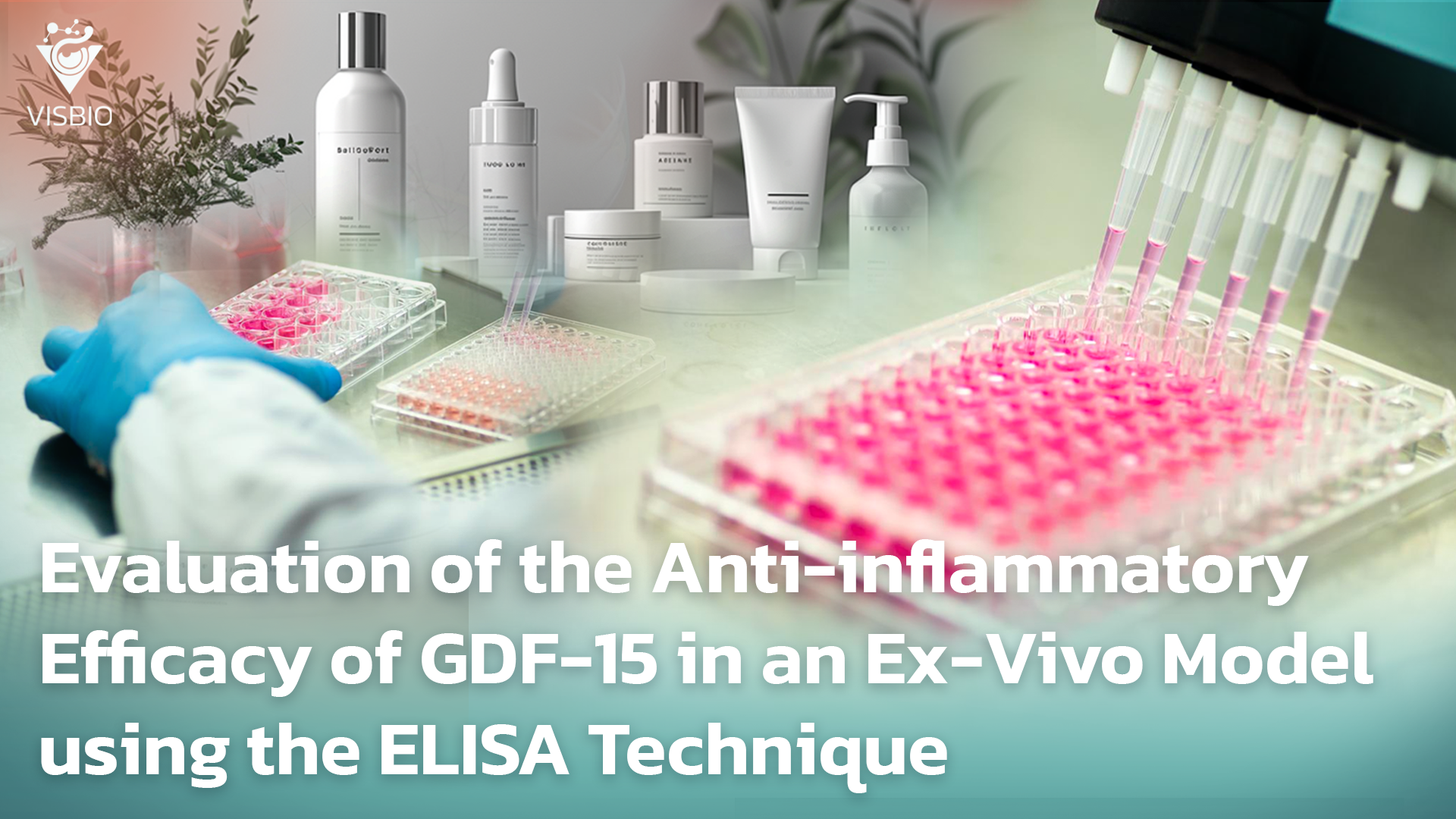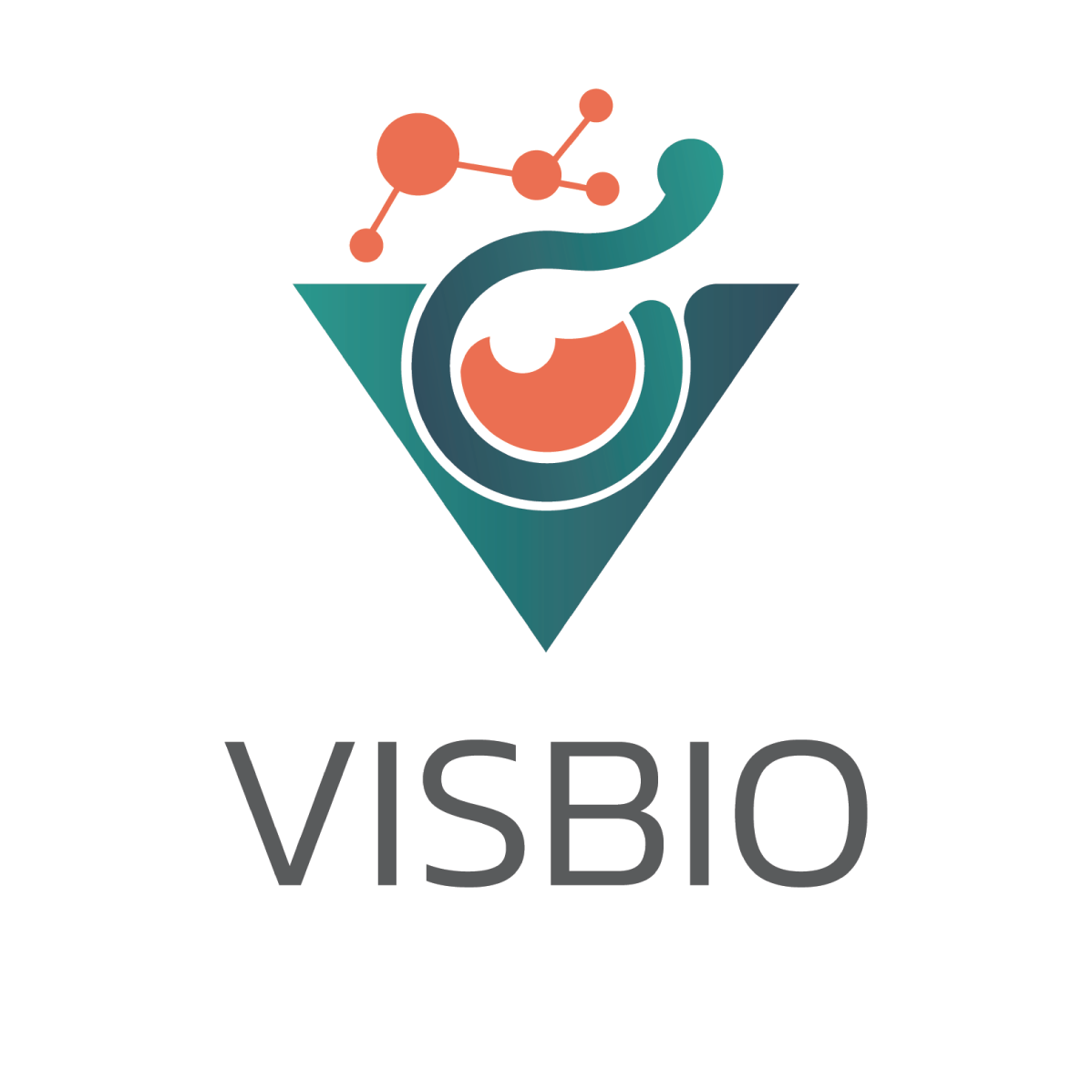
Evaluation of the Anti-inflammatory Efficacy of GDF-15 in an Ex-Vivo Model using the ELISA Technique
The skincare products is driven by innovation and a deeper understanding of consumer needs. The discovery and comprehension of new biological mechanisms for application in developing effective and differentiated products are paramount to success. One molecule currently garnering significant attention in medical science and skin biology, and which holds the potential to revolutionize the development of anti-inflammatory and holistic skin health products, is Growth Differentiation Factor-15 (GDF-15).
The GDF-15 protein is not merely a complex biomolecule; it is also a key that may unlock the secrets of inflammatory processes in the skin, cellular responses to various stressors, and its links to homeostasis and age-related skin deterioration. A thorough understanding of the roles and behaviors of GDF-15 will enable opportunities for:
- Developing new product lines focused on targeted and effective management of skin inflammation.
- Selecting Active Ingredients with mechanisms of action that align with GDF-15 regulation for optimal results.
- Product Efficacy Substantiation (Claim Substantiation) with credible scientific evidence through the use of GDF-15 as a biomarker in testing.
Growth Differentiation Factor-15 (GDF-15) is a protein that has garnered significantly increased attention in medical science and biological research due to its complex and diverse roles in various physiological and pathological conditions, particularly in inflammatory processes, cellular stress responses, and tissue repair.
Biological Significance
GDF-15, also known by other names such as Macrophage Inhibitory Cytokine-1 (MIC-1), NSAID-activated gene (NAG-1), PLAB, or PTGFB, is a member of the Transforming Growth Factor-β (TGF-β) superfamily. Mature GDF-15 protein is a homodimer secreted from cells. GDF-15 is involved in the regulation of cell growth, differentiation, and immune system control. Another important characteristic is its response to cellular stress conditions, which is a crucial basis for considering GDF-15 as a potential biomarker.
Cellular Sources of GDF-15
GDF-15 is expressed at low levels in most tissues but is significantly upregulated in response to various cellular stressors, including inflammation, tissue injury, hypoxia, oxidative stress, and mitochondrial dysfunction. The expression of GDF-15 can be stimulated by pro-inflammatory cytokines such as IL−1β, TNF−α, IL−2, and Macrophage Colony-Stimulating Factor (M-CSF).
GDF-15 is produced by various cell types, including macrophages, endothelial cells, cardiomyocytes, adipocytes, vascular smooth muscle cells, keratinocytes, and fibroblasts. Additionally, the placenta is an organ with very high GDF-15 expression.
GDF-15 in the Skin Microenvironment: Inflammation, Homeostasis, and Disease
GDF-15 plays an interesting and complex role in the skin, the body’s largest organ, which acts as the first line of defense. Understanding the interactions of GDF-15 within the skin microenvironment is therefore crucial for developing strategies to treat and prevent various skin diseases.
- Skin Inflammation GDF-15 exhibits both pro-inflammatory and anti-inflammatory roles, depending on the specific context and environment. Evidence suggests that GDF-15 can inhibit TNF−α secretion during macrophage activation, indicating an anti-inflammatory role. Furthermore, GDF-15 influences macrophage polarization, which is involved in anti-inflammation and tissue repair. GDF-15 expression itself is also stimulated by pro-inflammatory stimuli, and in some situations, GDF-15 is associated with increased inflammation, such as elevated GDF-15 levels in patients with Juvenile Dermatomyositis (JDM), which correlate with skin disease severity scores. Conversely, GDF-15 also possesses a rapid anti-inflammatory mechanism by inhibiting neutrophil integrin activation. This complex role is critically important in interpreting experimental results in ex-vivo skin models. An increase in GDF-15 may indicate an ongoing inflammatory response or an attempt by the body to control and resolve that inflammation. Conversely, a decrease in GDF-15 after treatment could signify a reduction in cellular stress or an inhibition of a beneficial bodily response, requiring careful interpretation in conjunction with other biomarkers.
- GDF-15 in Specific Skin Conditions and Diseases The role of GDF-15 in various skin diseases demonstrates its complexity and disease-specific responses:
- Juvenile Dermatomyositis (JDM): GDF-15 levels are significantly elevated in JDM patients and correlate with Disease Activity Scores (DAS).
- Psoriasis: In contrast, GDF-15 levels are decreased in psoriasis patients. TNF−α, a cytokine involved in inflammation in psoriasis, inhibits GDF-15 function, thereby exacerbating psoriasis.
- UVB-Induced Damage: In an in-vitro human keratinocyte model, UVB irradiation rapidly stimulates an increase in GDF-15 levels (within 2 hours post-irradiation). Grape seed extract (Vitis vinifera seed extract, GSE) can modulate (reduce) these UVB-stimulated GDF-15 levels, indicating its photoprotective and anti-inflammatory properties.
These examples illustrate the dynamic and condition-specific behavior of GDF-15 in skin pathology. The role of GDF-15 in psoriasis (reduced levels are detrimental) differs from that in JDM (elevated levels correlate with disease severity), underscoring the necessity of considering context when interpreting GDF-15 changes. Studies on UVB are directly relevant to testing cosmetic ingredients with photoprotective properties. This information suggests there might be a “Goldilocks principle” for GDF-15 in skin health; that is, both too little GDF-15 (e.g., in psoriasis, or in GDF-15-deficient fibroblasts leading to senescence) and too much GDF-15 (e.g., correlating with disease severity in JDM) can be detrimental or indicative of pathology. This means optimal skin health may depend on a balanced, homeostatic level of GDF-15, rather than an increase or decrease alone being universally “good” or “bad.” This complexity is crucial for interpreting GDF-15 as a biomarker in product testing.
Link to Skin Cell Aging
GDF-15 is becoming recognized as an indicator of mitochondrial dysfunction and is considered a “mitomyokine” or “mitokine,” a marker of mitochondrial stress. Elevated GDF-15 levels are found in muscle diseases associated with mitochondrial dysfunction. A reduction of GDF-15 in human dermal fibroblasts (HDFs) leads to mitochondrial dysfunction (e.g., increased Reactive Oxygen Species (ROS), decreased mitochondrial membrane potential, impaired oxygen consumption, and altered mitochondrial morphology) and premature cellular senescence. Fibroblast-specific GDF-15 loss in a 3D reconstructed human skin model results in epidermal thinning, a hallmark of skin aging, and induces a distinct Senescence-Associated Secretory Phenotype (SASP).
This link directly implicates GDF-15 in skin aging and cellular health at a fundamental level. Products targeting “anti-aging” or “skin health” benefits by improving mitochondrial function or reducing cellular senescence could potentially be evaluated by monitoring GDF-15 levels. However, the detrimental effects of GDF-15 reduction suggest that maintaining an optimal level or function of GDF-15 may be key to anti-aging, rather than solely attempting to decrease GDF-15 levels.
GDF-15, Skin Health, and Disease
GDF-15 has been proposed as a biomarker for JDM severity, to differentiate myopathies, and potentially for psoriasis. Observations have also been made regarding the role of GDF-15 in age-related pigmentation and melanogenesis. Its inducibility by stress makes GDF-15 a general indicator of cellular perturbation.
Ex-Vivo Human Skin Model: For Assessing Anti-inflammatory Effects by Measuring GDF-15 with the ELISA Technique
The ex-vivo model is an invaluable tool in dermatological research, particularly for assessing the anti-inflammatory effects of active substances or products, as it closely mimics the natural physiology of human skin while preserving the complexity of its structure. Furthermore, the use of ex-vivo human skin models helps avoid ethical concerns associated with animal testing; animal skin is known to differ significantly from human skin in terms of microanatomy and physiology. The ability to apply test substances in an ex-vivo model allows for the precise evaluation of compound penetration and the stimulation or inhibition of specific biological responses within the human tissue matrix. Specifically, changes in GDF-15 levels, an inflammation-related marker, can be measured using the specific and accurate ELISA technique. Measuring GDF-15 in this ex-vivo model, which closely simulates clinical use scenarios, enables a reliable assessment of the efficacy of substances aimed at reducing inflammation.
Evaluation of Anti-inflammatory Efficacy Using GDF15 as a Marker in Ex-Vivo Models with ELISA: Suitable Examples
GDF15 (Growth Differentiation Factor 15) is a protein that is produced and secreted at increased levels under conditions of cellular stress, injury, or inflammation in various tissues, including the skin. Although GDF15 has complex roles, its elevated levels are often associated with cellular inflammatory responses. Measuring GDF15 levels in Ex-Vivo human skin models stimulated to induce inflammation (e.g., UV irradiation or application of inflammatory agents) can be used as an indicator of the level of inflammation occurring.
Testing for anti-inflammatory efficacy using GDF15 as a marker in Ex-Vivo models is performed by applying the product or substance to be tested to Ex-Vivo skin samples, then inducing inflammation, and subsequently measuring the amount of GDF15 produced by the skin cells in those samples using the ELISA technique, which is a specific and accurate method for protein quantification. If a product can reduce the elevated levels of GDF15 resulting from inflammation, it suggests that the product is likely to have anti-inflammatory properties.
Examples of suitable products, active ingredients, and topical medicines for this testing include:
1.Products:
- Post-sunburn soothing products: To evaluate efficacy in reducing UV-induced inflammation.
- Products for sensitive/irritated skin: To assess the ability to reduce the skin’s inflammatory response.
- Serums or creams containing antioxidant/anti-inflammatory ingredients: To evaluate effects on cellular inflammatory processes.
- Products for skin with redness problems or chronic inflammation.
2.Active Ingredients:
- Plant/herbal extracts: Many have a history of use for reducing inflammation, such as Centella asiatica, Aloe vera, curcumin extracts.
- Antioxidants: Such as Vitamin C, Vitamin E, flavonoid compounds, which help reduce inflammation caused by oxidative stress.
- Peptides
- Synthetic compounds
3.Topical Medicine
Literature:
- Emmerson, P. J., Duffin, K. L., Chintharlapalli, S., & Wu, X. (2018). GDF15 and Growth Control. Frontiers in Physiology, 9, 1712.
- Rzemieniewski, B., Kasztelan, A., Poboży, K., & Domańska-Poboża, J. (2024). Growth differentiation factor 15 – a review of current literature on biological roles and clinical significance. European Journal of Clinical and Experimental Medicine, 22(4), 921-933.
- Decean, H. P., Brie, I. C., Tatomir, C. B., Perde-Schrepler, M., Fischer-Fodor, E., & Virag, P. (2018). Targeting MAPK (p38, ERK, JNK) and inflammatory CK (GDF-15, GM-CSF) in UVB-Activated Human Skin Cells with Vitis vinifera Seed Extract. Journal of Environmental Pathology, Toxicology and Oncology, 37(3), 261-272.
- Wedel, S., Martic, I., Guerrero Navarro, L., Ploner, C., Pierer, G., Jansen-Dürr, P., & Cavinato, M. (2022). Depletion of growth differentiation factor 15 (GDF15) leads to mitochondrial dysfunction and premature senescence in human dermal fibroblasts. Aging Cell, 22(1), e13752.
- Duvvuri, B., Gonzalez-Chapa, J. A., Pachman, L. M., Morgan, G. A., Naik, N., Shenoi, S., & Lood, C. (2025). The emerging role of growth differentiation factor 15 as a potential disease biomarker in juvenile dermatomyositis. Rheumatology, 64(2), 805-809.

